Hope is Not a Strategy
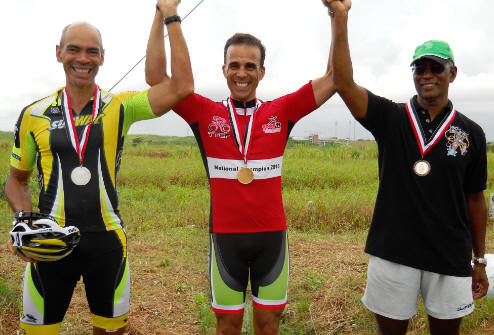
Norco Cycling Team's
Derek de Gannes successfully defending his
Trinidad & Tobago Road Race & TT Championships and
took silver
in the Crit!
We've all read the books, we've all trawled the net, we've all listened to our friends/coaches/mentors. And we've all looked for that short-cut, magic bullet answer that will turn us in to the latent champion that we know lives within us all.
So why don't we all get to stand on the top step of a national podium like the superstar above? Six Sigma Training that's why? And why don't we all do six sigma training? Because it's bl**dy hard, that's why.
So here's my low-down on something you've probably never heard of, how it works and why attention to detail is important. But first (as ever) a quick historic overview...
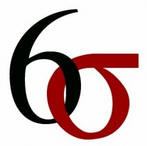 Six
Sigma Training
Six
Sigma Training
First off, as with most things in these pages, here is something I've taken
from somewhere else in my life and adapted for our sporting needs. I have very
few original
or unique thoughts of my own. But I do like a good cross fertilization!
This is my "sporting" interpretation of a statistical process control management model that's been around since the 1920's.
It was developed by General Electric and Motorola (the company, not the cycling team!) in the mid-1980's. It's not a real system for us to use, more a conceptual model on how to prepare for sporting success.
Six Sigma is effectively a way of ensuring products and services (or performance training) meet or exceed expectations, by ensuring deficiencies are kept below 3.4 occurrences per million actions.
A lofty, but realistically achievable ambition, if you're willing to do the work. But it's not really "work". It's the easiest thing in the world. Just a little application that will bring the biggest payback for the least physical effort. All it takes is a little time and thought.
The rider that eliminates as many of their "deficiencies" as possible, or at the very least, eliminates one more than their opposition, gets to stand on the top step, like Mr de Gannes, above. It's no coincidence that he stood on a national podium three times this year (and in year's before).
These extraordinary achievements don't happen by chance. He worked as hard on his "deficiencies" as he did on his strengths. He earned those podiums as much through his own due diligence as he did through the blood, sweat and gears of The Suffervals!
So what does he do that the others aren't doing? Probably not too much really, he just does it a little more thoroughly. The devil (and the victory), as ever, is in the detail.
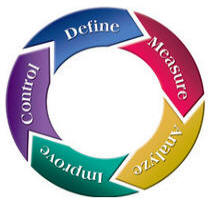 The Thinking Model
The Thinking Model
Now I've said this many times before on this website and will undoubtedly
say it many times again...
To maximise your chances of sporting success, "If what you are doing right now isn't contributing directly to your overall stated objective, then just stop doing it".
There; how hard can that be? I know; this could be such a short factsheet if I finished it here! But I won't.
The first thing we need to get our head around is what are we trying to achieve? Then, using a structured thought process, work backwards to understand how we go about achieving it. Starting at "define" above, we move clockwise around the circle until we return to the beginning. It's as simple as that.
As you all know, we need a clearly defined goal. But a goal, without a plan to achieve it, is nothing more than a dream.
Dreams are good, we all need dreams. But every race, sportive and cycle challenge is made up of hundreds, if not thousands of riders, with dreams.
I'd say of all the riders in a non-professional event, 80% never get past the define stage. 15% of them fall in to the gap between the "measure" and "improve" stages. Maybe 5% will apply some element of control.
Of those that complete the circle, there are a tiny minority that apply themselves fully to each and every element. These are the riders in with a shout and primarily make up the podium above. One of them did it just a little bit better than the others. Can you guess which one it is?
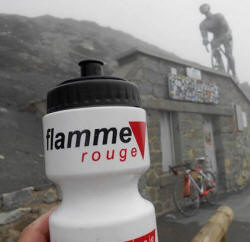 The
Winner Takes It All
The
Winner Takes It All
The riders that make things happen are the ones with a plan.
The one with the best plan, executed in the best fashion, is the one standing on the top step; or
the one that achieved their stated objective.
Not all of us have the physical talent or physiological capabilities to stand on the top step of a podium; national or otherwise. Some of us have to settle for being the best we can be with what we have available.
For me, that's all you can ask of for.
So. Pay just 1% more attention to each and every stage of the circle and you get orders of magnitude returns. When races are won by centimeters it's easy to see how this stuff makes a difference.
The answer to the rhetorical question you've already asked yourself, is; "Yes, this absolutely applies to each and every one of us".
 Stage
One ~ Define
Stage
One ~ Define
We've been here before a thousand times but it's always worth
repeating. I know you all know it, so I won't go in to too
much detail here.
Your first objective to get to where you want to be, is to define where you're going. The simplest and most overlooked stage of all.
One of the questions we ask as part of our coaching questionnaire is "How will you define success?" What, to you, will signify that your individual session, micro cycle, programme, or season has been successful.
It's the SMART Goal that gives us direction and focus. So make sure you spend time now, to define it well. It makes so, so, much difference.
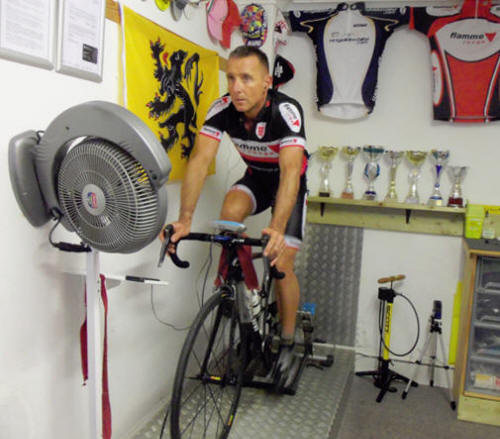
 Stage
Two ~ Measure
Stage
Two ~ Measure
Once you've defined your SMART goal, and the (SMART) parameters
required to meet it; you can go about planning a route towards it.
But from where?
Now you have a destination, you need to find out from where you're starting. And that involves measuring stuff. Benchmark whatever it is that needs benchmarking to ensure a successful outcome.
Measure whatever is relevant to your objective. Is it your, lactate turning point, VO2max capacity, FTP, sprinting prowess, endurance based efforts, power-to-weight ratio, aerobic, anaerobic or neuro-muscular limiters?
There are simple tests you can carry out using your turbo, a speedo, a stopwatch, a power meter, Strava or any of a multitude of options you can choose or define yourself.
Just make sure that what you use is fit for purpose and gives you the information you need. There's no use measuring peak power output if you're targeting endurance events like the Etape or Marmotte (other fantastically, brilliant, classic rides are available!).
And there's no point undertaking a Wingate Test if you're trying to crack the hour for a twenty-five. So measure something that reflects your goal. For anything over an hour's duration, a classic 20 minute turbo test (tracking, speed, distance and heart rate) is enough.
 Stage
Three ~ Analyse
Stage
Three ~ Analyse
This is where
most people trip themselves up. It's the analysis that brings
the big returns, so don't skimp on this process. This is where
a coach earns their money.
It's so, so easy to jump to a conclusion, when faced with overwhelming evidence that your training should take a particular route.
For instance, when faced with the dilemma of having to climb faster, most people concentrate on raising their power output to gain an advantage. They will, quite literally, beat themselves to a pulp to squeeze out an extra 15 climbing watts.
We have people here, who will go to our biggest, longest, steepest hill and climb it repeatedly. Week after week, month after month, to try and improve their climbing. A plausible (but misguided) approach.
Others buy the latest "dimpled" aero wheels, silk tubs, carbon bottle cages, ceramic jockey wheels, titanium skewers and 11 speed, super sexy electronic group-sets.
The fact that they could easily,
and so cheaply, make an immediate 8%
climbing gain by losing
three kilos of weight off themselves, is often overlooked!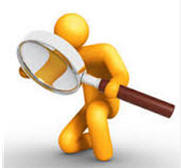
Always. always, always look for the cause, not the symptom.
The symptom ~ to meet your stated objective, you are climbing slower than you need. The cause ~ you're heavier than you should be at 80 kilos.
A symptom is fundamentally nothing more than observable evidence of a problem. A symptom is an output.
Your job is to identify the individual causal input that created the observable symptom output. Then create an action plan to address it directly within a given timescale.
Body weight, which may (at first) seem the problem, is itself a symptom; caused by poor nutrition management.
To use the management jargon, drill down and find the granularity. The rule of thumb is to ask "why" five times. Yes, it's a pain. Yes, it's tedious, and yes, you'd rather be on your bike. But this stuff matters, especially if you want to move up a level. And sometimes you get there before the fifth "why?".
▼ Why are you overweight? ~ "I eat biscuits all day".
▼ Why? ~ "I'm always hungry".
▼ Why? ~ "Don't have time for breakfast".
▼ Why not? ~ "Have to get to work for 8:00 am".
So get up fifteen minutes earlier, or get everything ready the night before!
You can spend an hour on your bike and transform your day. Or you can spend an hour doing this and transform your season.
As you can see above, get up fifteen minutes earlier each day and you lose weight, feel better, climb faster, cause less stress (physical, mental and gastric) and improve your life and wellbeing. After the first week of feeling "strange and tired" you get used to it. Sorted...
 Stage
Four ~ Improve
Stage
Four ~ Improve
We all want to improve, of course we do. Why else would we be
spending time here reading this drivel? We could be out on our
bikes, improving!
Once you've analysed your test data, or other peripheral symptom and problem information you have to hand, it's time to re-visit your SMART Goal. Is it still fit for purpose? If you want to crack the hour for a 25 mile TT, and you're currently doing 1:15's, is that really feasible?
Never be afraid to re-visit your goal. Push and challenge yourself by all means, just don't set yourself up to fail.
You can't improve everything you do. Everything can be improved, but not at any cost. Sometimes you just don't have the time, energy or resources to fix everything. So what do you do? You use more management jargon that's what. You triage the issues; or as us flamme rouger's say, you RAG it...

Use your "drill down analysis" to acknowledge as many areas for improvement as you can. Just get a big sheet of paper, a word processor or a spreadsheet and create a "big idea sheet". If you're really sad (like me) use a mind map (here's an example).
Look at (for example) Equipment. Then break that down in to smaller categories, frame, wheels, tyres, gears, power meter, Garmin, saddle, etc. Look at everything you can think of, then just RAG it.
▼ Green ~ all okay, no action needed, ignore it for now
▼ Amber ~ nice to change, or address, but not immediately
▼ Red ~ immediate attention required, blocking achievement
With everything on your list get a felt tip pen, highlighter or crayon of each colour and mark every individual element according to your thoughts. Don't over analyse.
Look at it and within 10 seconds, give it a colour, then move on. This part of the process should take ten minutes, with a cup of tea and a biscuit. We haven't given biscuits a red mark yet!
It really is quite easy to do and in one "brain-dump" hit, identifies the crucial addressable elements to help you meet your goal. Even more importantly, they are there, written down, for you to see and action.
Once you have this information you have two options. Do something about it and take steps towards success or do nothing and suffer the alternative. It's all in your hands; to change it, or not.
 Stage
Five ~ Control
Stage
Five ~ Control
Okay, now we get to the real hard stuff! Everything you've done
above has taken maybe an hour per section. Now it's time to
get real and step up to the plate and play the long game.
Control, is an ongoing process. Control of your training, your environment, your health, your wellbeing and control of your emotions. Is as easy to get carried away as it is to get dispirited. So don't. Don't get too giddy with success and don't become too despondent when you get the winter bug flying around your workplace.
You can bet your last energy gel that everyone else you're going to compete against, has got it, or will get it at some point. Very few people get through a winter without some ailment, minor or otherwise. It's not just you, so don't feel hard done by when you get it and think everyone else is stealing a march on you. They're not.
From the information above, make a Red List, an Amber List and a Green List. Give yourself a fortnight to sort the red list and a month to clear the amber list. As you clear them, move them to the green list and once a month re-visit the green list to make sure nothing has slipped back to amber or red.
Again, this should be a cursory, ten minutes sanity check as you get to each recovery week. Just do it with a cup of tea and a rice cake!
Your mission, during the control process, is to consolidate your strengths, develop your weaknesses and mitigate or avoid as much risk as you can. You do this by correcting or avoiding anything red in your improve triage. Otherwise, what's the point of doing it?
Stay away from coffee stops; the great unwashed frequent them. Don't go out when it's icy, do a turbo; why risk your season for an hour's fresh air? Night time group rides? Weight training? "Northern portions" when eating? Fizzy drinks? Five hour winter rides? Chain-gangs? Mud guards? Biscuits, cakes and bread? Clothing? Bike maintenance? Look at everything you do and see if it can be improved?
Wash your hands every couple of hours when at work or travelling. Everyone will laugh at you but they aren't putting in 250 hours of training, and spending a couple of grand to get them through the Marmotte. Let them laugh, just make sure you're healthy.
Manage the things you can control and mitigate the things you cannot. We'll cover this in more depth, in the next factsheet.
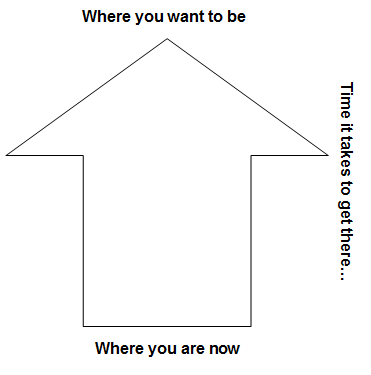
The Big Picture
Define a goal ~ obviously your objective has
not just appeared out of the ether to you. It has been something you've
always wanted to do, but didn't have the time to get around to.
Well now you've defined it, it has just become more real. If you do what I do, and tell everyone about it, then hopefully the shame of failure will keep you focused and on track for success.
Let's say you've set a target of riding Alp D'Huez in under an hour. A laudable aim; but doing it fresh is a lot different than riding it at the end of the Marmotte! To hit the hour, you need a VAM of around 1100 m/h.
Measure & Analyse ~ We've measured what we need to measure, say 20 minute power output in a controlled test, and now we have data that we can extrapolate out to an FTP figure.
With our known weight, we can calculate our current VAM.
All we need to do is find the VAM difference between where we are now and where we need to be for our objective date. It's then a case of designing a programme, with sub-goals, to ensure we hit the target (of 3.75 w/kg for 60 minutes) square on, come the day.
Improvement ~ comes from hitting the sub-goals set in to each and every micro-cycle. Every month should have an aim and objective that drives you towards your goal. Your aim is to be constantly heading towards the target on a monthly basis. Not in having laser accuracy on a day by day basis.
And again, you need to look at the big picture. Climbing is more about mitochondria development and oxygen uptake than leg strength. An hour's base build is far more beneficial than an hour in the gym. So drop the leg presses and squats; they won't help you improve your climbing!
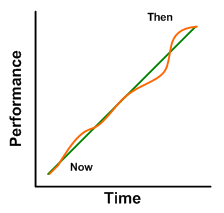 Control
~ there will always be setbacks. I'm yet to see
anyone complete a 20 week programme without having to "jiggle" a
session or two.
Control
~ there will always be setbacks. I'm yet to see
anyone complete a 20 week programme without having to "jiggle" a
session or two.
We all have to take family holidays, at some point most of us will get ill, miss sessions and have work imposed upon our "training time". As long as the trajectory heads in the right direction then all is good.
To the right, the green line shows our desired and planned route to our objective. The orange line shows the route life dictates we take.
The big blast before the end, is when we realise we're behind in our schedule and try to "catch up" by doing five weeks training in the month before. It's the most dangerous time of any programme. This is where you can make it all fall apart.
Never try to catch up missed sessions by cramming them in to the weeks after you missed them! When Christmas and New Year come, we all miss sessions. If you have early season objectives, you have three months to get back on track. If it's a mid-season objective, you've got six months!
You don't have to claw everything back, by cramming in three consecutive super-turbo days, in to the week after you missed them! Your body doesn't work like that. Let them go and do your next three sessions with a little more focus.
And you can't "cram-train" just before the event. Overload and taper by all means, just don't go chasing the fitness; you'll never catch it. Hit the event fresh rather than fatigued. It works every time.

The Jens Voigt of Atlanta ~ Outspokin's
Tommy Freckman
Breakaway expert, top step visitor and series champion
The Message ~ Part One
Okay, I've rattled on enough now. That's it for part one of
this thesis.
As you can see, being a champion is all about always sweating the details. A championship isn't won by the rider who managed to be the best for a select couple of hours, on a pre-selected, summer's day.
It's won by the rider that's dedicated themselves to the task in the previous nine months. The one that strayed from the pre-determined path the least. The one that looked at the detail and lived the life of a pro.
It's not for everyone and it's not something we (as normal weekend warriors) should be doing week in, week out, year in year out. But every now and again, we should give that extra 20% committment to get an 80% improvement in results.
It's hard, of course it is. Cycling is a hard sport at any level, let alone podium level. But it's within us all if we just allow ourselves to be part of the experiment and try it for one winter and one season. It could just change your life.
Until next time and part two...








